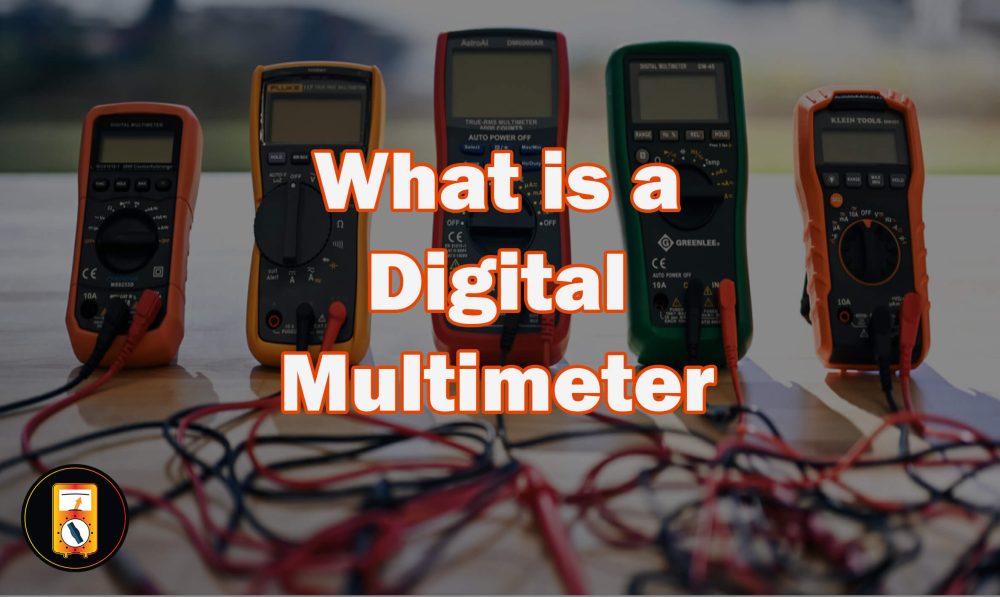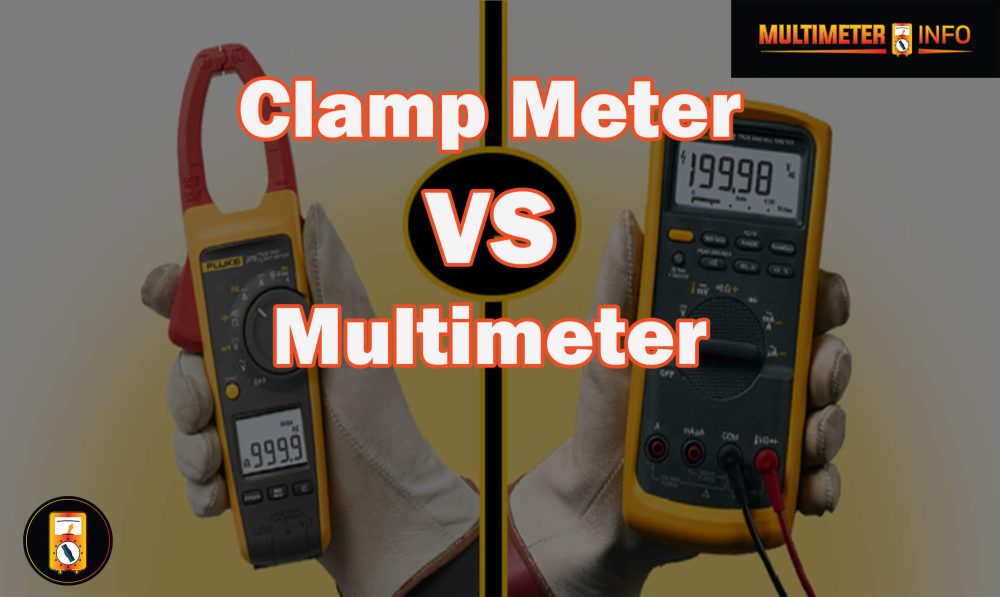Are you troubleshooting an electrical issue, but not sure where to start? It can be daunting looking at all the possible components that could be the source of a problem. A nice way to get started is by taking it one step at a time and testing each component individually. Testing a capacitor with a multimeter is especially useful when diagnosing complex electrical problems. In this blog post, we’ll discuss how simple it can be to test a capacitor using your multimeter as well as any safety precautions you should take before starting. Let’s dive in!
What is a capacitor?
A capacitor is an electrical component used to store electric charge in a circuit. It consists of two conducting surfaces separated by an insulator, or dielectric. The charge stored in the capacitor can be used to provide energy for various electrical components and systems, such as amplifiers and signal processors.
What does a capacitor do in a circuit?
In a circuit, a capacitor acts as an energy storage device that stores electric charge temporarily during times when the current flow is low or halted. It acts like a battery but with much less capacity than one. Capacitors are mainly used for filtering out unwanted frequencies from the main signal, smoothening voltage fluctuations, delaying voltage rise time, and providing extra current when needed.
When the capacitor is charged, it holds the charge until a discharge occurs. When this happens, the capacitor discharges its stored energy into the circuit and releases its stored electric charge. In this way, capacitors act like temporary batteries that can store and release energy when needed in a circuit.
Capacitors come in many shapes and sizes and are used in almost every type of electrical device or system. They’re an essential component of any electrical system because they provide stability to the voltage levels within the system while also providing extra current when needed.
Overall, capacitors are an important part of the circuitry in many electrical devices and systems because they provide stability to voltage levels and store energy for use during times of low or no current flow. They’re also used to filter out unwanted frequencies from the main signal, smoothen voltage fluctuations, delay voltage rise time, and provide extra current when necessary. Without them, electronic systems would not be able to function properly and reliably.
How to test a capacitor with a multimeter?
Testing a capacitor with a multimeter is an important process to ensure the capacitor is functioning and not damaged. To do this, you will need a multimeter and some basic familiarity with how to use it.
Use the Resistance (Ω) mode on the multimeter
- Set the multimeter to measure resistance (Ω).
- Place the positive probe of the multimeter on one lead of the capacitor and then the negative probe on the other lead.
- Take a reading from your multimeter; if it reads ‘infinity’ — or near enough to that — then you can assume that the capacitor is good and functioning correctly.
- If you get any other number, then this could mean that there is something wrong with the capacitor and it should be replaced as soon as possible.
- To double-check whether your capacitor has a problem or not, set your multimeter to measure capacitance (F). This will allow you to measure the capacitance of the capacitor in question.
- If the capacitor is functioning, and you get an expected reading that is within the range printed on the body of your capacitor — or whichever data sheet you may be using — then it is safe to assume that your capacitor is working correctly.
- If not, then this could be a sign indicating that there might be something wrong with the capacitor and you should either repair or replace it as soon as possible.
Testing a capacitor with a multimeter is not as difficult as it may seem. Test the condition of a capacitor, there are several methods we can use to examine its operation and performance.
Use the capacitance mode on the multimeter
This is the most common way to test a capacitor and it can be done simply by setting the multimeter to the capacitance mode.
- Set the multimeter to capacitance mode.
- Place both of the meter’s probes on the capacitor leads. Make sure that you are inserting them into the correct sockets and that they’re not touching each other.
- Read and record the numerical value reported by the multimeter display or readout.
- Compare this number with the rated capacitance located in your device’s datasheet or manual to check for accuracy and determine if any repairs need to be done.
- Remove the probes from their respective terminals after testing is complete, then turn off the multimeter before putting it away safely.
It is highly recommended to use insulated protective gloves when working with a multimeter, as electricity can be dangerous. Additionally, always double-check the device’s datasheet to make sure that you are correctly using the multimeter. This will help ensure accuracy and safety when testing a capacitor with a multimeter.
Use the continuity mode of a multimeter to check the capacitor:
- Remove the capacitor from its circuit and discharge it completely by connecting the leads to a resistor. Connect one of the leads from the capacitor to the positive terminal (red probe) on the multimeter and connect the other lead to the negative terminal (black probe).
- Turn on your multimeter and switch it to continuity mode, indicated by a waveform icon.
- If you get a continuous beep sound, then there is no leak or breakage in your capacitor and it is working properly. However, if you don’t hear any sound, then either there is an internal fault in your capacitor or it has gone bad and needs to be replaced immediately for safety reasons.
- Disconnect the leads of your multimeter and store the capacitor in an insulated container safely.
It is important to note that you should use caution when dealing with capacitors as they can carry large amounts of electricity. Always wear safety gear such as gloves and goggles when handling them. Make sure to discharge them properly before removing them for testing, otherwise, It could cause electric shocks or even fires. Also, make sure that you turn off the power supply before working on any electrical circuit containing a capacitor. This will ensure your safety and prevent any unwanted accidents from taking place.
Common problems that can occur with capacitors:
Leakage:
A capacitor can become faulty and start to leak current, which is known as leakage. This can lead to short circuits or the capacitor may be unable to store the required charge.
High ESR values:
When a capacitor has an excessively high Equivalent Series Resistance (ESR), it will not be able to provide the necessary impedance and power efficiency. This leads to increased losses due to heat dissipation, which ultimately reduces performance and increases power consumption.
Dielectric absorption:
If there is excessive dielectric absorption within a capacitor, it can cause capacitance drift over time and reduce system reliability.
Poor contact resistance:
Capacitors with poor contact resistance can cause noise, and errors in the circuit and eventually lead to system failure. Poor contact resistance is also a major factor in impedance mismatching.
Electrical overstress:
Excessive electrical stress on the capacitor can cause sudden failure or degradation of components within the capacitor. This can be caused by applying too high of a voltage across the terminals or using excessive ripple current through the capacitor.
It is important to ensure that capacitors are working correctly and free from common faults before putting them into use in any circuit design. By doing so, you can ensure reliable operation and top performance for your electronics applications.
How to dispose of old capacitors safely
Capacitors are an important part of many electrical and electronic systems, but they can become hazardous when they reach the end of their useful life. Proper disposal is essential to ensure safety and protect the environment.
Research Local Disposal Regulations:
Before you discard an old capacitor, check local and state regulations to ensure that you are disposing of the item correctly. Many governments require special disposal procedures for electronic components such as capacitors.
Unscrew the Capacitor:
If possible, unscrew the capacitor from its housing or circuit board to make it easier to store and transport safely.
Prepare the Capacitor for Transportation:
Wrap the capacitor in a static-safe bag or wrap it in aluminum foil before placing it in a box or container for transportation. Make sure that the capacitor is secure and cannot move around during transit – this will help avoid short circuits and potential damage.
Transport the Capacitor to a Recycling Facility:
Take the capacitor to a specialized recycling center or facility that can safely and appropriately handle hazardous materials such as old capacitors.
Dispose of the Waste Properly:
The recycling center will dispose of the waste according to local regulations and guidelines, ensuring that it does not end up in landfills or contaminate water supplies.
By following these steps, you can ensure that your old capacitors are disposed of correctly and safely. This process helps protect both people and the environment from any potential hazards associated with disposing of electronic components such as capacitors improperly.
Frequently Asked Questions:
To measure capacitance, you’ll need to use an ohmmeter or digital multimeter. Set your meter to the highest setting for resistance and attach the leads of your multimeter to each side of the capacitor. Then, observe the reading on the display screen to determine its capacitance in microfarads (µF).
Yes, you can measure capacitance in an electric circuit using a multimeter with relative accuracy. To do this, simply set your multimeter to the highest setting for resistance and connect the leads of your meter to each side of the capacitor within the circuit. Then observe the reading on the display screen to determine its capacitance in microfarads (µF).
Leakage current is a type of electric current that flows through a capacitor when it is not connected to any other components in a circuit. This flow of current indicates that there may be something wrong with the capacitor or that it has been damaged.
The maximum capacitance you can measure with a multimeter depends on the model and brand. Most standard digital multimeters will have a range of up to around 10,000 µF (10mF). However, some models may be able to measure much higher levels of capacitance. It’s best to consult your user manual or manufacturer’s website to determine the exact capabilities of your device.
Final Note:
In conclusion, Testing a capacitor with a multimeter is an important task to do as part of regular maintenance and inspection of electronic components. It’s relatively straightforward to do but care must be taken when handling the delicate electrical parts. There are different approaches you can use with a multimeter depending on what type of capacitor you have and what information you want to get out of it. As long as you follow the safety precautions and read your user manual carefully, testing a capacitor should be no problem at all.





